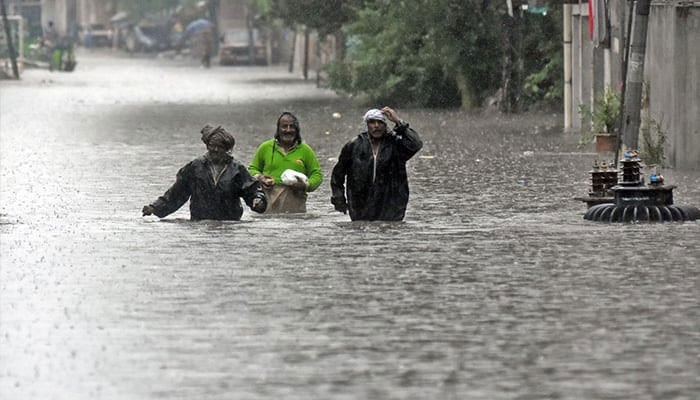After reports that the death toll from this season’s monsoon had risen past 300 on Monday (August 4) and a visit from the prime minister to Gilgit-Baltistan to chair a high-level meeting to review the flood damages and distribute funds to the affected, heavy rains battered parts of Islamabad and Punjab on Tuesday and Wednesday. This was reportedly the sixth monsoon spell of the year and led to rescue operations in Islamabad and flood warnings across the riverine areas of Punjab. While much of the focus was on GB to start the week, with the PM announcing a Rs4 billion package for infrastructure restoration and distributing compensation cheques among monsoon-affected families in the region, the attention has shifted right back to Punjab just a day or so later. This goes to show just how expansive and unpredictable this year’s rains have been. While the southern half of the country has thus far been spared the worst of the monsoon, no one knows if this will last or for how long. All we know is that there will be more rain and more damage, this year and the next. During his time in GB, the prime minister noted that each year since the 2022 floods, monsoons have brought destruction with varying degrees of intensity. To get an idea of this year’s intensity, the rainfall was above average with a positive anomaly of +23 per cent for Pakistan as a whole.
He also reminded everyone that Pakistan is one of the most vulnerable countries to climate change despite contributing a virtually negligible amount to global greenhouse gas emissions. Highlighting the long-term and global nature of what has been transpiring throughout the country over the past month or so was a wise decision. Whenever a natural disaster hits Pakistan, the discussion is dominated by what a certain authority did or did not do and who among the current leadership is to be blamed. While the government and the disaster management authorities should by no means be let off the hook for the lives lost and damage caused, it is important to remember that they are dealing with a problem that was created by others and which puts unique pressures on them to respond. A first-of-its-kind UN Global Risk Report has mentioned climate inaction as the top global risk in terms of importance. The burden of this inaction falls almost entirely on those countries pumping out the majority of CO2 and leaving the Global South to deal with the consequences. Climate injustice compounds economic injustice, with developing countries often lacking the fiscal space to meet the climate challenge and rich countries being reluctant to offer much financial help.
It is also important to note that the damage could have been a lot worse without the actions that the local authorities have taken. The work will only need to continue after the monsoon is over. Around 1,676 houses are thought to have been damaged across the country since June 26 and 562 homes are thought to have been completely destroyed. Rebuilding after the rains are over has not been one of Pakistan’s strong suits, with the aftermath of the 2022 floods being instructive in this regard. More attention must also be paid to securing the safety of vulnerable groups such as tourists, farmers and children, with the latter accounting for almost half of those who have lost their lives this monsoon season. It might be unfair that Pakistan has only itself to count on when it comes to this task but that cannot be an excuse for not doing what needs to be done.
